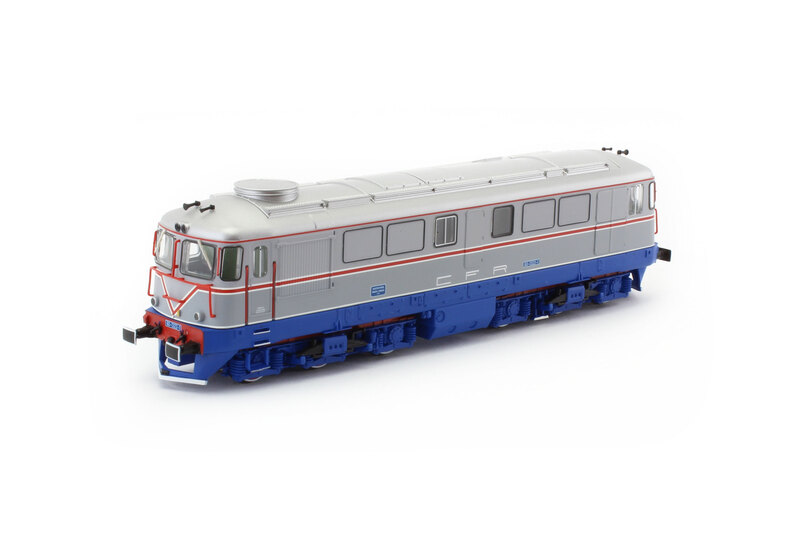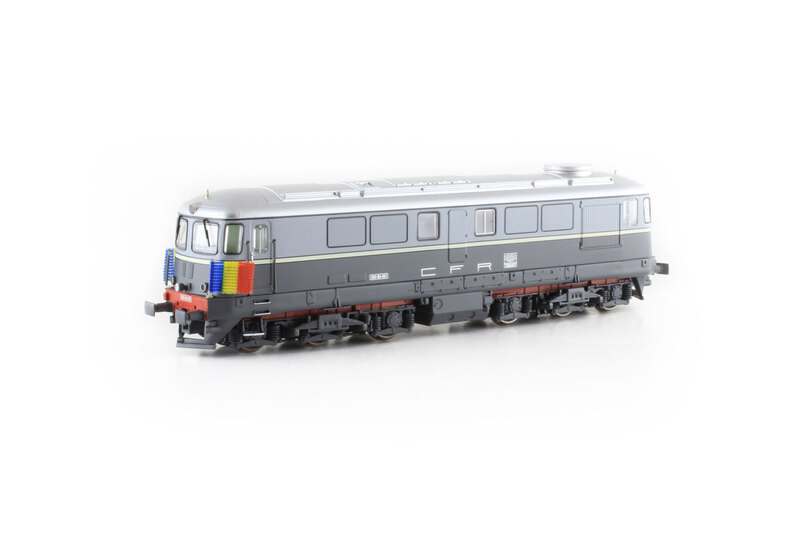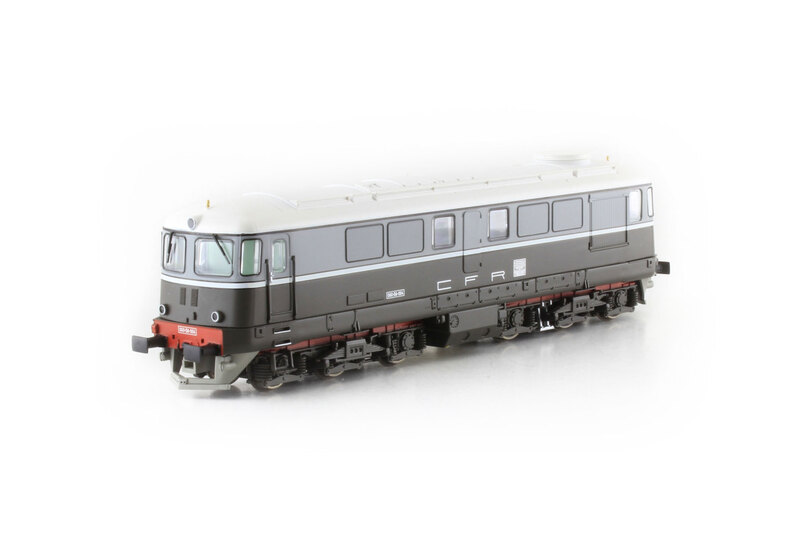
Source: Attila Zsiros - cfr.stfp.net

Source: facebook.com

Source: Andrei Berinde - facebook.com

Source: GH Taylor - facebook.com

Source: Peter Bagshawe - deviantart.com

Source: sbbarchiv.ch

Source: sbbarchiv.ch

Source: sbbarchiv.ch

Source: John Tomlimson - facebook.com

Source: John Tomlinson - facebook.com

Source: cheminots.net

Source: P. Cvikevic - flickr.com

Source: P. Cvikevic - flickr.com

Source: Sludge G

Source: Bahnbilder von W. + H. Brutzer

Source: Bahnbilder von W. + H. Brutzer

Source: Bahnbilder von W. + H. Brutzer

Source: Bahnbilder von W. + H. Brutzer

Source: Bahnbilder von W. + H. Brutzer

Source: Bahnbilder von W. + H. Brutzer

Source: Stefan Puscasu
Romania: Class 60
Also known as: 060-DA
UIC / EVN numbering: 92 53 0 600, 92 53 0 601
Railway companies: CFR - Romanian Railways, SNTFC - National Company for Railway Passenger Transportation
1956
For this purpose, a consortium is formed, consisting of:
- the Swiss Locomotive and Machine Works (SLM) in Winterthur, mainly in charge of the mechanical parts of the locomotive and the overall general assembly of the locomotive;
- Brown Boveri & Co in Baden (BBC), mainly in charge of the installation of the electrical equipment;
- Sulzer Brothers in Winterthur, in charge of the diesel engine.
Sources: https://www.railnet.ro/viewtopic.php?f=119&t=4097, https://www.derbysulzers.com/cfr2100.html
1956
April
- the purchase of 6x diesel electric locomotives and the necessary parts (ten diesel engines and the complete electrical equipment) to build another 10x units in Romania for 6.9 M$;
- a licence to manufacture this type of diesel-electric locomotive in Romania;
- the transfer of technology and equipment necessary for the production of 40x diesel-electric locomotives for 1,2 M$.
Sources: https://railnetromania.blogspot.com/2013/11/Locomotiva-Diesel-electrica-060-DA-2100-CP.html, https://www.railnet.ro/viewtopic.php?f=119&t=4097
1959
Initially, the locomotives are equipped with multiple traction control, which allowed the driving of two or more locomotives from a single driving position.
Being considered mainly locomotives for freight trains, they are not provided with train heating installations, which determined the use by the Romanian State Railways (CFR) of WIT wagons and even towed steam locomotives for heating passenger trains!


Before beeing delivered to Romania, all 6x locomotives undergo acceptance trials on the Swiss railways network from May to October 1959, mainly on the route from Winterthur to St Gall or Romanshorn.
The first locomotive also made a trip up the northern bank of the Gotthard line as far as Goschenen. This involved a climb of 600 meters over 28.6 km. With a 66 axle freight totaling 550 tons, the locomotive was able to reach 22 km/h in 3 minutes. During another test, a 94 axle 1066 tons freight train was pulled by one locomotive over the 55 km route from Winterthur to Romanshorn. Under full power, 60 km/h were maintained over minor gradients near Weinfelden. On the return trip, with the whole of the train stopped on the ruling grade of 1 in 83, a speed of 30 km/h was reached after three minutes.
Two locomotives, coupled in multiple traction, were tested on the Romanshorn route with a trailing load of 1,227 tons. With one engine shut down the train was restarted on a 1 in 200 grade accelerating to 40 km/h within three minutes. The performances registered during testing were equal to or better than the paper calculations established for these new locomotives.
Sources: https://www.railnet.ro/viewtopic.php?f=119&t=4097, https://www.derbysulzers.com/cfr2100.html, https://railnetromania.blogspot.com/2013/11/Locomotiva-Diesel-electrica-060-DA-2100-CP.html
1959
The following 10x units, registered 060-DA-007 to 060-DA-016 are built using the equipment provided from Switzerland. Orders beyond this had the power unit constructed by Masini Resita with Caromet Caransebes constructing the bogies.
These initial orders were to be used on replacing steam locomotives on a variety of freight trains. Because of the excellent results from these early orders they were selected to replace the Pacific steam locomotives on the passenger routes from Bucharest to Constanta, Urziceni - Galati & Rosiori - Craiova.
With the CFR fleet of 060 DA locomotives just exceeding 1,400 when the last one was built, there were bound to be changes within such a large fleet. The maximum speed of the locomotive was 100 km/h but full power was only available to about 80 km/h, beyond this the useful power of the locomotive diminished. At Electroputere the traction motors were modified to allow the full power range for speeds of almost 100 km/h.
Other locomotives had their maximum speed increased to 120km/h by modifying the traction motor gear ratios (these locomotives were classified 060 DA1).
Sources: https://railnetromania.blogspot.com/2013/11/Locomotiva-Diesel-electrica-060-DA-2100-CP.html
1963
One year later, during the Poznan International Fair in Poland, a contract is negotiated for the delivery of 30x units in 1965, registered as ST43 by PKP. Many more will follow.
1972
 In order to repay a Chinese loan, Romanian authorities began to export 060-DA diesel locomotives to China in 1972.
In order to repay a Chinese loan, Romanian authorities began to export 060-DA diesel locomotives to China in 1972.Locomotives exported to China are designated as ND2, of which "N" stands for internal combustion locomotives, "D" stands for electric transmission, and "2" stands for the second imported internal combustion locomotive model. This batch of locomotives are passenger locomotives based on 060 DA locomotives and improved according to the requirements of the use of Chinese railways. The main changes include changing the original one-sided cab door of the 060 DA locomotive to a double-sided door, moving the driver's console from right to the left to comply with the usage specifications of China Railway Locomotive. In addition, the front design of the locomotive has been improved. The front of the cab has been changed from the plane to a slightly inclined angle on the upper part and the lower part is tilted to the inside. Blunt head shape.
The first batch of ND2 locomotives arrived in China in 1972. First, they belonged to the Changsha Locomotive Depot of the Guangzhou Railway Bureau and the Shanghai Locomotive Depot of the Shanghai Railway Bureau, and were put into the Beijing-Shanghai Railway, Beijing-Guangzhou Railway and Zhejiang-Jiangxi Railway towed passenger trains. In the same year, the Institute of Railway Science of the Ministry of Railways cooperated with the Shanghai Railway Bureau to carry out the imported ND2 locomotives. Acceptance tests were carried out. The test locomotives were 060-dc-0001 and 060-dc-0002, and the test was carried out at the Beijing Ring Railway according to the diesel engine calibration power (2,300 horsepower). Due to the good performance of ND2 locomotives in use and the insufficient production capacity of diesel locomotives in China at that time, the Ministry of Railways ordered more ND2 locomotives from Romania. Between 1972 and 1987, the Romanian company Craiova produced a total of 284 ND2 diesel locomotives for China, of which the first 50 were provided to China as "debt-for-debt", and the rest were purchased by China from Romania. The main assigned locomotive sections are the Changsha Locomotive Depot of Guangzhou Railway Bureau (Guangbo Bureau Chief Section, later renamed Guangzhou Railway Long Section), Guangzhou Railway Bureau Guangzhou Railway Bureau Guangzhou Railway Bureau (Guangzhou Bureau Guangdaoguang Section), Guangzhou Railway Group Company Haikou Locomotive Section (Guangzhou Railway Hai Section), Shanghai Railway Bureau Shanghai Railway Bureau Shanghai Railway Bureau Shanghai Railway Bureau Nanjing Locomotive Section (Shanghai) Section), Nanchang Locomotive Depot of Shanghai Railway Bureau (Shangchang Section), Hefei Locomotive Section of Shanghai Railway Bureau (Shanghai Bureau Hehe Section), Jinhua Locomotive Section of Shanghai Railway Bureau (Shanghai Bureau Jin Section), Shanghai Locomotive Section of Shanghai Railway Bureau (Shanghai Section), Nanchang Locomotive Section of Nanchang Railway Bureau (Southern Section).
During the introduction of ND2 locomotives, there was a dispute over the international freight. On April 23 and 24, 1986, the 65th cargo ship Datian of Tianjin Ocean Transportation Company (now COSCO Bulk Transportation Co., Ltd.) was responsible for carrying 15 ND2 diesel locomotives ordered by China Machinery Import and Export Corporation from Romania and departed from the port of Constanţa, Romania. To Shanghai Port. Five of them were loaded in the third cargo compartment, the other 10 were installed in the ground cabin of the second cargo compartment, and the second locomotive was loaded with thin steel plates and bagged urea. During the voyage, due to the unreasonable distribution of urea, the collapse of the second deck of the second cargo compartment occurred. After the melting of urea, a large amount of ammonia was produced, causing 10 locomotives at the bottom of the cargo compartment to be corroded to varying degrees. All 10 locomotives need to be repaired before they can be used, and the repair cost exceeded 1.29 million yuan. The accident led to a dispute between the cargo insurer (Shanghai Branch of the People's Insurance Company of China) and the carrier (China Ocean Shipping Company) and appealed to the court about the unit of calculation of the damage limitation.
In 2004, Grupul Feroviar Roman, Romania's largest private railway company, bought back 20 ND2 locomotives from the Shanghai Railway Bureau, including those from Shanghai Locomotive Depot, Hangzhou Locomotive Depot and Nanjing Locomotive Depot. The car was shipped to Romania at the port of Shanghai in the same year. After returning to Romania, the locomotives were renovated by the Romanian company EUROEST in Constanţa, and microcomputer control and diagnostic equipment were installed, and re-entered in service. According to the Romanian railway specifications, the locomotives were renamed Class 60-1501-0-60-1520-0; these renovated Class 60 locomotives still retain the characteristics of China Railway ND2 locomotives, including double-sided cab doors and blunt-shaped cab, so it is easy to It can be identified from many Class 60 locomotives.
1975
Sources: http://www.railnet.ro/viewtopic.php?f=79&t=111&start=100
1981
In total, over 2404x units are built, including many for various private industries within Romania, and those for the state railways of Poland, Bulgaria & China.
NB: for the locomotives built for Romania, the numbering started at 060-DA-001 for every new customer, this is why there are multiple locomotives registered 060-DA-001.
1994
Latest update on the 7th of October 2022 at 23:14
Contributor(s): Tudor C.
Discussion forum
















